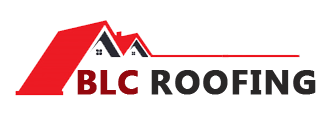Roofs are the unsung heroes of our homes, providing shelter, safety, and adding aesthetic value. However, a silent adversary often lurks unnoticed, posing significant risks to both the structure and the inhabitants: mold. Understanding the dangers of mold and how to prevent its growth is crucial for every homeowner.
Contents
Identifying Mold on Your Roof
Mold, along with its close relatives algae, moss, and mildew, thrives in environments with high humidity or inadequate roof drainage. Here’s how to spot them:
1. Differentiating Between Algae, Moss, Mildew, and Mold
- Algae: Recognizable by its green or black-green hue, it often appears as a surface stain and feels slimy.
- Moss: This benign organism has a distinctive bright green, fuzzy appearance.
- Mildew: A powdery substance that proliferates in warm, wet climates, it usually presents as a light gray-green color.
- Mold: The most concerning of the group, mold often emits a foul odor and appears as dark patches on surfaces, especially on damp wood or drywall.
2. The Smell Test
Persistent musty odors, especially after airing out spaces, can indicate mold growth, particularly if the smell originates from the attic.
3. Health Symptoms
While not all molds are toxic, they can still lead to health issues such as respiratory infections, aggravated asthma, and skin rashes.
4. Visible Signs Inside Your Home
Discoloration at the ceiling-wall joint, peeling paint around windows, or darkened, softened wood can all be indicators of mold growth due to water intrusion.
Preventing Mold Growth on Your Roof
Prevention is the best approach when dealing with mold. Here are some proactive measures:
5. Prune Overhanging Trees
Ensure tree branches are trimmed at least three feet away from your roof. This prevents shading and allows water to evaporate quickly, reducing mold growth chances.
6. Maintain Clean Gutters
Regularly clear out debris from your gutters. Clean gutters ensure efficient water drainage, preventing mold-friendly environments.
7. Install Ridge Vents
Ridge vents, positioned at the peak of sloped roofs, allow warm, moist air to escape, keeping attic spaces cooler and less conducive to mold growth.
8. Use Advanced Roofing Materials
Modern roofing materials often come with water-repellent properties or are treated to prevent algae and mold growth.
Effective Mold Eradication Techniques
If mold does appear, early detection and action are key:
9. Bleach Solution
Spraying a 1:1 solution of bleach and water can effectively kill mold. However, avoid scrubbing or using high-pressure washers on asphalt shingles.
10. Copper or Zinc Strips
Installing these metal strips can deter algae growth. Some modern shingles even come with these strips integrated.
11. Vinegar Against Moss
A 1:1 mix of apple cider vinegar and water can effectively combat moss and algae, though it’s less effective against mold. Ensure surrounding plants are protected from overspray.
In Conclusion
Your roof is an invaluable part of your home. Regular maintenance, including mold prevention and treatment, ensures its longevity. If you ever suspect mold growth or need professional assistance, consider reaching out to BLC Roofing, a trusted name for roof repair service in Akron OH. With their expertise in roofing services in Akron OH, they can provide comprehensive solutions, from roof installation in Akron OH to addressing mold issues, ensuring your home remains safe and mold-free.
